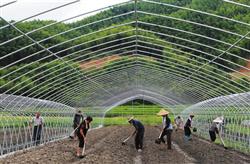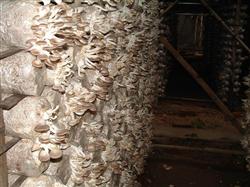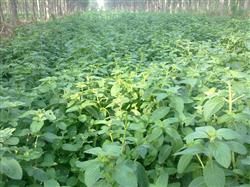What should I pay attention to when growing peppermint?

What should I pay attention to when growing mint? Please give guidance on how to grow mint and note the following points for reference: 1. Selection and fertilization of garden plot Peppermint cultivation should choose fertile soil, flat terrain, good light, convenient transportation plot, before sowing combined with deep ploughing, mu of high-quality farm manure 1500-2000 kg, calcium superphosphate 50 kg. 2. Seeding at the right time Peppermint can be sown in winter and spring in Hui County, and the best sowing time is early February and early November. Sowing method to drill as well, row spacing 25-30 cm, plant spacing 8-10 cm, sowing depth to 12-15 cm, after sowing rake flat, compact, if the soil is dry, to irrigate a root stabilization water. Mu seedlings about 30,000, in the case of sufficient rhizomes, advocate whole root sowing, generally 80-150 kg per mu seed. 3. Field management ① Thinning or transplanting: When the temperature stabilizes to above 10℃ and the mint grows to more than 7 cm, the density should be adjusted and the over-dense seedlings should be moved to a sparse place for planting. (2) Removing impurities and keeping pure: When mint grows to identify the characteristics of this variety, manually remove wild, miscellaneous and seedlings without this characteristic. The earlier the impurity removal and keeping pure work, the better. It should be removed after rain and removed for many times. After impurity removal, the density is too small to transplant and replenish seedlings. 3. Cultivation and weeding: 2-3 times of cultivation and weeding should be carried out before mint emergence and sealing. Weeds in the field should be thoroughly removed before harvest to prevent weeds from being brought into the pot and affecting the quality of oil. ④ Reasonable weeding: The fertilization principle of mint is light application of seedling fertilizer, heavy application of branch fertilizer and clever application of leaf protection fertilizer. In general, 2.5 kg urea is applied per mu at seedling stage; 1000 kg animal manure or 10 kg diammonium phosphate and 10 kg potassium sulfate are applied at branching stage; 10 kg ternary compound fertilizer such as Sakefu and Dasanyuan are applied per mu one month before harvest. 5 Irrigation and drainage: remove water in time when there is more water, and irrigate in time when the weather is dry. 4, harvest: mint harvest twice a year, the first time between the heat and heat; the second time between the cold dew and frost. When the amount of flowers in the field reaches more than 10%, the weather is sunny for several consecutive days, the temperature is high, and the ground is dry, the ground is cut with a sharp knife from 10:00 a.m. to 3:00 p.m. every day, the stems without leaves at the lower part are cut off, and the stems are spread on the ground until 6-7 dry, so that the oil can be distilled and extracted. 5. Cultivation and management of two-knife mint After harvesting, spray 60% butachlor emulsifiable concentrate 300 times in time, then apply 15 loads of diluted baking and 25 kg of phosphate fertilizer per mu, and then pat the soil between large rows on the small rows after harvesting to promote the growth of second knife mint. Other management measures are the same as those of first knife. 6. Pest control Due to its avoidance effect, mint has fewer diseases and insect pests, snails and cutworms can be captured manually, and can also be controlled by trichlorfon, dichlorvos and other chemicals. Aphids were controlled with anti-germicidal and dimethoate, bridge insects were controlled with trichlorfon, rust and powdery mildew were controlled with triadimefon and diammonium. Weeds of grass family were controlled with butachlor and benazepam, broadleaf weeds were controlled with bentazon and chlortoluron. Click for more mint cultivation techniques Click for more herb cultivation techniques
- Prev

Xiuzhen mushroom cultivation formula: Xiuzhen mushroom high-yield cultivation techniques, Xiuzhen mushroom what are the diseases and insect pests?
What are the diseases and insect pests of Xiuzhen mushroom? Please give an introduction and control methods Xiuzhen mushroom diseases and insect pests can refer to the following methods for control: first, Xiuzhen mushroom disease and pest prevention 1. Environment: mushroom rooms and bed frames should be strictly sterilized in advance. During mushroom planting, heat preservation, moisturizing and communication should be done as far as possible.
- Next

How to manage the cultivation of peppermint?
How to manage the cultivation of peppermint? Please introduce the daily management methods of planting peppermint, such as seedling replenishment, weeding, water and fertilizer management, heart picking and so on. The following operation methods are introduced in detail for reference: seedling replenishment in order to obtain high yield, seedling retention in the field must maintain a certain density.
Related
- Fuxing push coffee new agricultural production and marketing class: lack of small-scale processing plants
- Jujube rice field leisure farm deep ploughing Yilan for five years to create a space for organic food and play
- Nongyu Farm-A trial of organic papaya for brave women with advanced technology
- Four points for attention in the prevention and control of diseases and insect pests of edible fungi
- How to add nutrient solution to Edible Fungi
- Is there any good way to control edible fungus mites?
- Open Inoculation Technology of Edible Fungi
- Is there any clever way to use fertilizer for edible fungus in winter?
- What agents are used to kill the pathogens of edible fungi in the mushroom shed?
- Rapid drying of Edible Fungi

